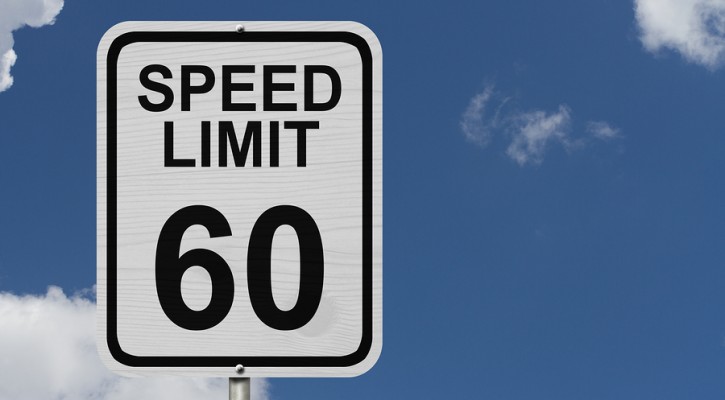
Ask The Traffic School Instructor: Speed Limits
September 24, 2014
Question: Do speed limits reduce traffic accidents?
Answer: No, speed limits by themselves can’t save lives. However, drivers who obey the posted speed limits do save lives. Let’s look at the purpose of speed limits and then, at why speed is dangerous.
According to the National Highway Transportation Administration (NHTSA), approximately one-third of all highway traffic deaths are directly due to speeding. Speeding means either going faster than the posted speed limit or traveling too fast for conditions.
What’s the purpose of speed limits?
There’s a popular belief that speed limits are just a way for governments to raise income by handing out traffic tickets but that’s not the case. Speed limits are determined by traffic engineers and set by local or state governments. No one likes traffic jams so, when trying to determine a speed limit, traffic engineers are actually trying to determine the highest safe speed that will allow traffic to move freely. In order to do this, they have to look at a lot of factors including; size of the road, number of lanes, curves, hills, whether the roadway passes through a school zone, shopping district, etc.
Taking all of those factors into consideration, once a speed limit is set, it is the maximum speed allowed during ideal conditions. Ideal conditions mean clear visibility and dry roads. When there is heavy rain, snow or fog, it’s up to drivers to adjust their speed according to conditions. Even if a driver is traveling at or below the speed limit, it’s still possible to get a speeding ticket for driving too fast for conditions.
Why is speed a problem?
Reaction time
The higher the speed, the less time a driver has to react to an emergency situation ahead. It takes between 1 to 1.5 seconds for a driver to react to an emergency situation. That means a driver obeying a speed limit of 45 mph will travel approximately 99 feet before he or she can fully react. A driver traveling 10 mph over the speed limit will travel more than 121 feet in the same amount of time. A lot can happen in that amount of space.
Laws of Physics
The laws of physics come into play also. A basic law of motion states that an object in motion tends to remain in motion – in a straight line. A driver driving too fast in a curve stands a good chance of losing control and running off the roadway because, due to the laws of motion, it’s physically impossible to keep the vehicle on the road. Physics also come into play in a crash. The higher the speed, the greater the crash forces will be.
Reducing traffic Jams
Believe it or not, if everyone were to obey the speed limit and keep a safe following distance between their vehicle and the vehicle ahead, traffic would move much faster and more smoothly. Traffic jams are caused by drivers who are driving too fast and then hit the brakes when they approach a vehicle ahead. This causes traffic behind to hit the brakes and a traffic jam is the result.
You won’t get there any faster by speeding and yes, obeying the speed limit saves lives!
